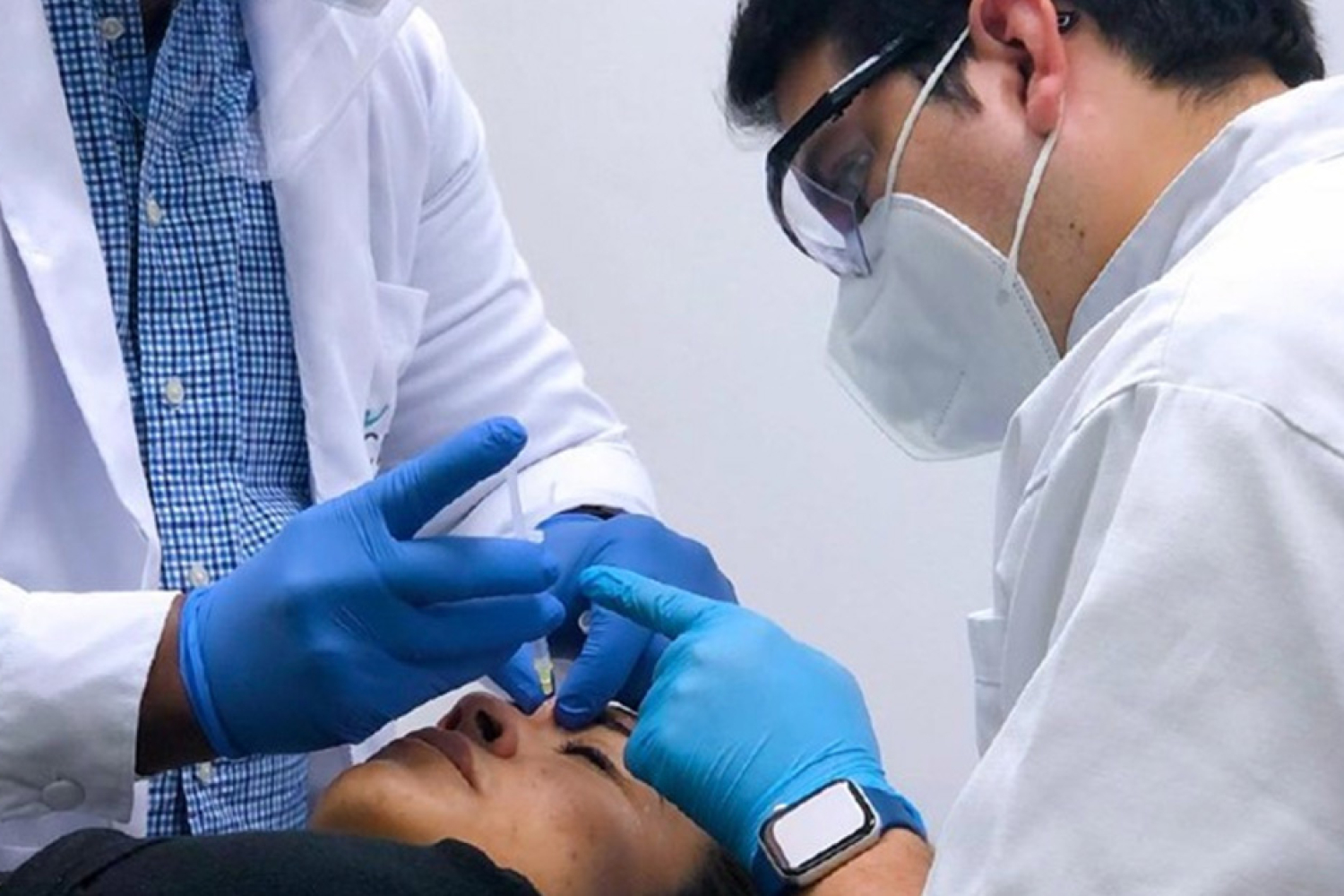Hyaluronic Acid Migration: What You Need to Know and How to Prevent It
Aesthetic Medicine has revolutionized the way we understand non-invasive facial rejuvenation. Among the most popular and requested treatments by patients is hyaluronic acid, a versatile molecule that has allowed facial remodeling, hydration, and volume enhancement with excellent results. However, it is also a technique that carries risks if not performed with the appropriate knowledge, technique, and clinical judgment. One of the most relevant adverse effects—although rarely discussed outside the professional sphere—is the migration of hyaluronic acid.
In this article, we will explain in depth what migration is, why it occurs, how to identify, prevent, and correct it. If you are a general physician interested in Aesthetic Medicine or have already begun training in this field, understanding this complication will help you elevate your practice and provide safer and longer-lasting results. At the end, we’ll also explain how to specialize with CIME Academy to master this and many other complications professionally and effectively.
What is hyaluronic acid migration?
Hyaluronic acid migration occurs when the injected product moves outside the intended anatomical area, leading to undesirable outcomes such as asymmetry, lumps, persistent inflammation, or distortion of facial anatomy. This complication can appear weeks, months, or even years after injection and is usually the result of poor technique, incorrect product choice, or improper patient follow-up.
Main causes of hyaluronic acid migration
Although several factors may contribute, the most common are:
1. Improper injection techniques
- Injection too superficial.
- Excess product in dynamic zones.
- Retrograde injection technique with uncontrolled pressure.
2. Inadequate product choice
- Using low crosslinked hyaluronic acid in high-mobility areas.
- Choosing fillers that are too soft in projection zones (e.g., chin or cheekbones).
3. Anatomical errors
- Lack of deep knowledge of facial planes.
- Injecting in high-risk zones without mastering surrounding vascular and muscular structures.
4. Post-treatment manipulation
- Inappropriate massages or excessive pressure after the procedure.
- Intense physical activity shortly after application.
- Visiting another clinic too soon for re-treatment without informing the new doctor about previously used products.
Areas most prone to migration
Certain anatomical areas have a higher risk due to their dynamics or complexity:
- Lips: perioral migration (“sausage lip” or “duck lip”).
- Tear troughs: displacement toward the cheek or appearance of malar bags.
- Nasolabial folds: asymmetric bulging visible at rest.
- Jawline harmonization: formation of "balls" or irregular lines off the mandibular line.
How to identify migration
Clinical evaluation and patient history are essential. Common signs include:
- Visible or palpable lumps outside the treated area.
- Persistent asymmetry after the inflammation period.
- Changes in skin texture or dynamic shifting when speaking or gesturing.
- Sensation of “moved product” upon touch.
More and more physicians now use aesthetic facial ultrasound to confirm the exact location of the product and determine if there's unwanted accumulation or migration—allowing for a more tailored treatment plan.
How to prevent hyaluronic acid migration
Prevention is the best strategy. Key points:
1. Solid training
Only education based on anatomy, technique, and complication management will allow you to inject fillers safely. At CIME Academy, we teach hands-on, rigorous methods to ensure safe product placement in every area.
2. Proper technique
- Use of needle or cannula when appropriate.
- Slow, controlled injections.
- Volumes adapted to indication and facial structure.
3. Deep product knowledge
Not all hyaluronic acids are the same. Choosing the correct degree of crosslinking, viscosity, and cohesiveness is essential for each area. Our training covers how to select the ideal product for every indication and location.
4. Patient education
Patients must understand post-treatment care and avoid massages, exercise, heat exposure, and pressure on the area for the first few days.
What to do if hyaluronic acid has migrated
Once migration is diagnosed, the action plan will depend on the degree of displacement, location, and aesthetic or functional consequences:
1. Clinical observation
In mild cases, waiting may be advised, as the product can naturally reabsorb over time.
2. Use of hyaluronidase
The enzyme hyaluronidase dissolves migrated HA. It must be used with caution and knowledge, as it can affect surrounding tissues and cause inflammation. In our courses, we teach safe, step-by-step protocols.
3. Subsequent aesthetic correction
After resolving the migration, it may be necessary to re-treat using the correct technique to restore harmony. Wait a safe period after hyaluronidase use before injecting HA again.
HA migration: a common error that separates novice from expert physicians
Many patients come to consultations seeking “corrections” after having received poor filler applications or experiencing migration from inadequately trained clinics. The difference between success and failure lies in continuous education and the professional ethics applied to each face.
At CIME Academy, we understand that hyaluronic acid is not a simple aesthetic product—it is a medical tool requiring clinical skill, judgement, and artistry. Our training programs go beyond injection—they teach you how to diagnose, prevent, and manage complications like this.
Why train with us?
- Over 15 years of experience training doctors in Aesthetic Medicine.
- Real cases and practice with real patients.
- Comprehensive education: anatomy, technique, complications, marketing, clinic management.
- Holistic approach from day one, with expert medical instructors.
- Based in Barcelona and Badalona, with national and international projection.
Conclusion: mastering technique is only the beginning
Understanding and managing HA migration demonstrates the level of professionalism expected from a well-trained aesthetic doctor. This is not a trivial discipline of "harmless injections"—it's a medical specialty rooted in science, ethics, and clinical safety.
If you’re considering training or want to level up, CIME Academy gives you the opportunity to stand out and practice with excellence.
Want to become a confident and expert aesthetic physician?
Enroll today and start transforming your professional future!
Location: Calle Entenza No. 144, 08929 Barcelona - Cime Barcelona Clinic
Phone: +34 937 979 010
WhatsApp: +34 690 864 816
Email: secretaria@cimeacademy.com





